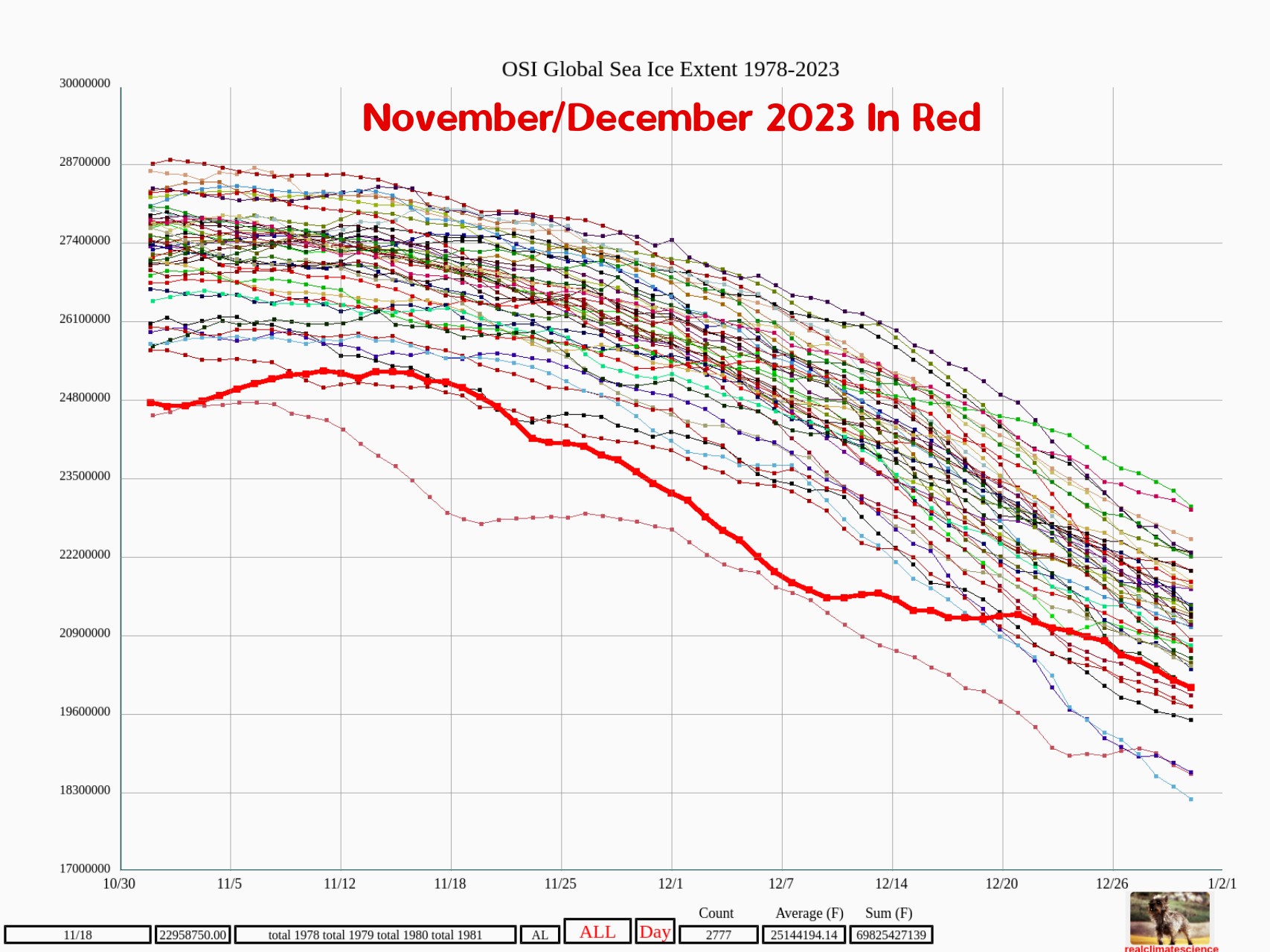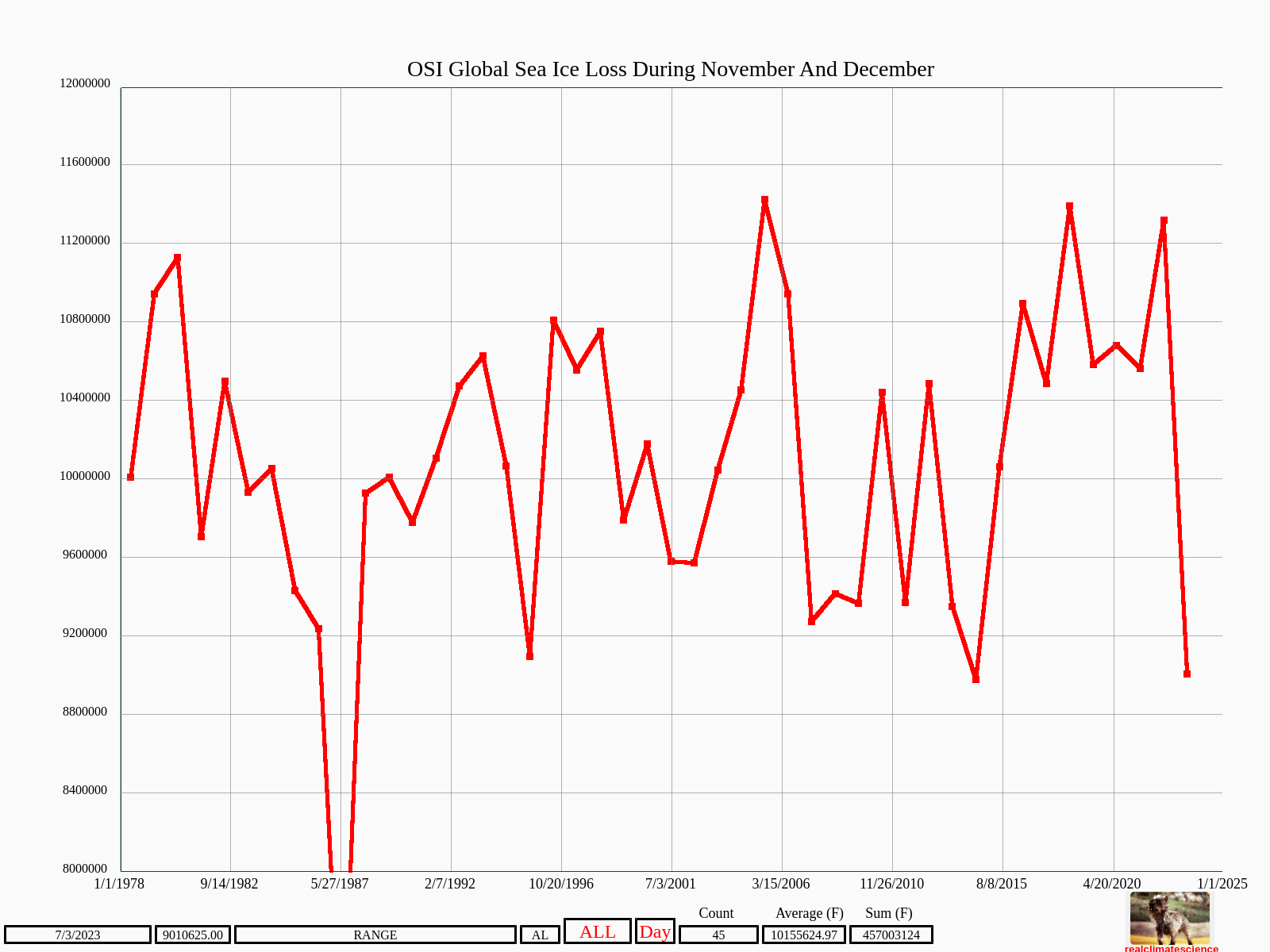After six years of rapid global sea ice loss during the last two months of the year, last year’s loss was second lowest on record, after 2014.
ftp://osisaf.met.no/prod_test/ice/index/v2p2/nh/osisaf_nh_sie_daily.txt
ftp://osisaf.met.no/prod_test/ice/index/v2p2/sh/osisaf_sh_sie_daily.txt
Growth of Arctic sea ice during December was second highest on record.





At the risk of repeating myself.
“So what?”
Long term shifts in the prevalence of sea ice strongly affects the global shipping trade. There is also a complex interaction with the fishing industry. Less ice coverage potentially gives fishermen access to the last habitats that have not been fished out and also changes those habitats. Ice coverage is a visible consequence of the ocean temperature in the present and helps determine how fast solar energy is absorbed by the ocean in the future. These patterns of annual ice overage can give you a clue about the new dynamic for ocean temperature, currents, and weather that the earth is transitioning to. So there are a lot of reasons people care about this. But you wouldn’t expect all those reasons to be repeated in each report of a new development. That is for you to understand in your own way and bring to your reading of the story.
I am forced to conclude that you are unfamiliar with my prior “debate” with Tony on XTwitter?
For additional background please see:
https://twitter.com/GreatWhiteCon/status/1742228044377370668
What is the purpose of publishing the “models” when the “Observations” continually show them to be in error?
The purpose is what you said: that observations may prove parts of the model in error, and that is an opportunity to make the model better. Not all parts of all models are invalidated, so the understanding continues to improve. But there is no point at all in publishing something that will definitely not be invalidated. Progress happens when there is a conditional understanding and some surprises that show how the understanding is not complete.